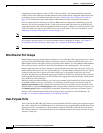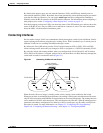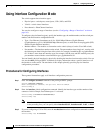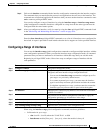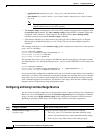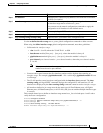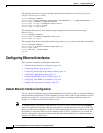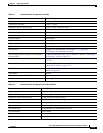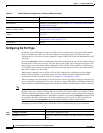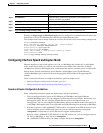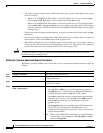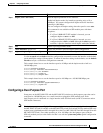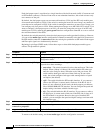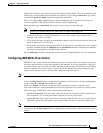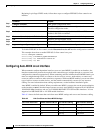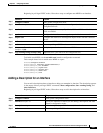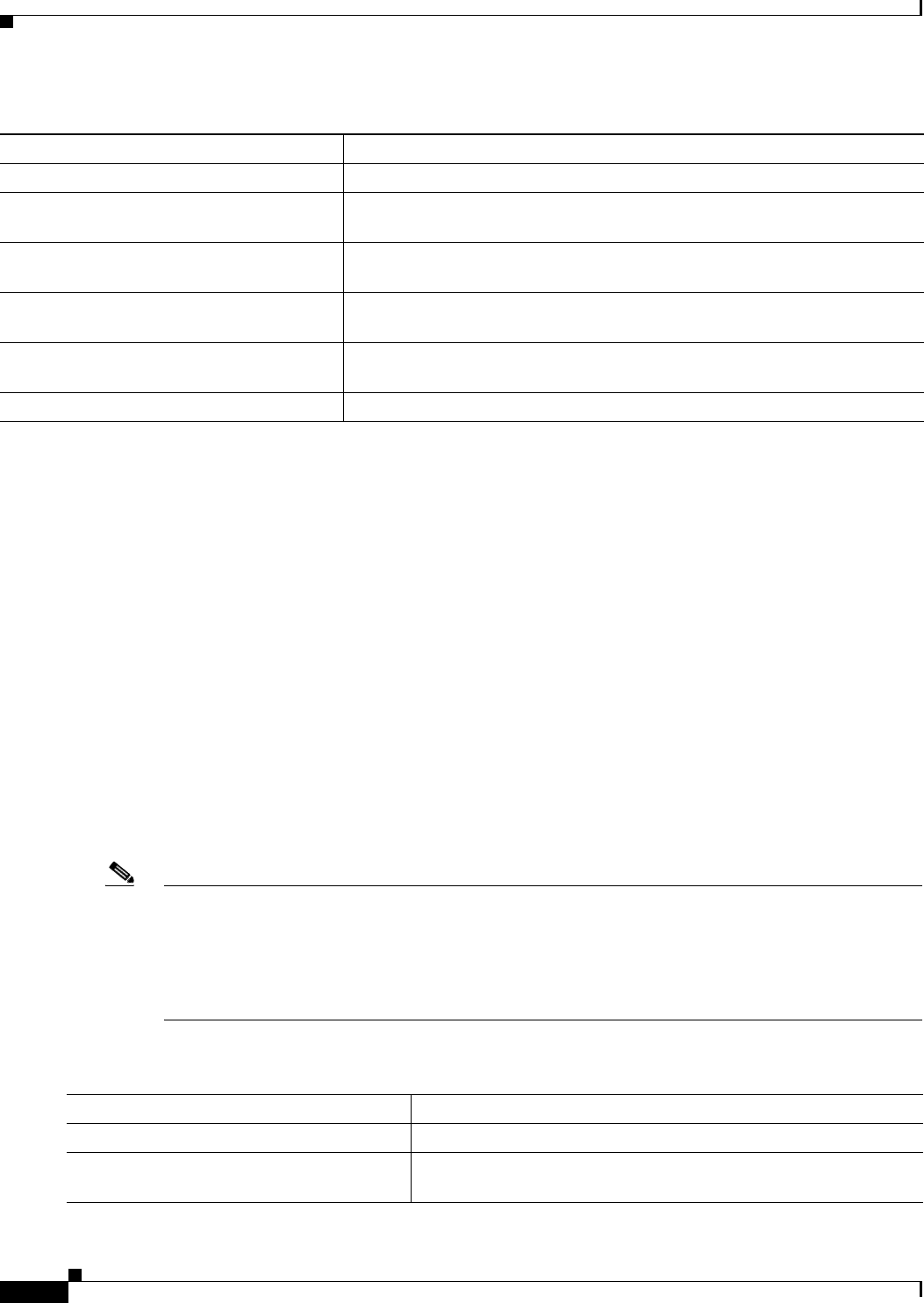
9-14
Cisco ME 3400 Ethernet Access Switch Software Configuration Guide
OL-9639-06
Chapter 9 Configuring Interfaces
Configuring Ethernet Interfaces
Configuring the Port Type
By default, all the 10/100 ports on the Cisco ME switch are configured as UNIs, and the SFP module
ports are configured as NNIs. You can also configure the port type as ENI. An ENI has the same
characteristics as a UNI, but it can be configured to support CDP, STP, LLDP, and Etherchannel LACP
and PAgP.
You use the port-type interface configuration command to change the port types. If the switch is running
the metro base or metro access image, only four ports on the switch can be configured as NNIs at one
time, but all ports on the switch can be configured as UNIs or ENIs. Starting with Cisco IOS Release
12.2(25)SEG, if the switch is running the metro IP access image, there is no limit to the number of NNIs
that can be configured on the switch.
When a port is changed from an NNI to a UNI or ENI, it inherits the configuration of the assigned
VLAN, either in isolated or community mode. For more information about configuring UNI-ENI
isolated and UNI-ENI community VLANs, see
Chapter 11, “Configuring VLANs.”
When you change a port from NNI to UNI or ENI or the reverse, any features exclusive to the port type
revert to the default configuration. For Layer 2 protocols, such as STP, CDP, and LLDP, the default for
UNIs and ENIs is disabled (although they can be enabled on ENIs) and the default for NNIs is enabled.
Note By default, the ME 3400 switch sends keepalive messages on UNI s and ENIs and does not send
keepalive messages on NNIs. Changing the port type from UNI or ENI to NNI or from NNI to UNI or
ENI has no effect on the keepalive status. You can change the keepalive state from the default setting by
entering the [no] keepalive interface configuration command. If you enter the keepalive command with
no arguments, keepalive packets are sent with the default time interval (10 seconds) and number of
retries (5). Entering the no keepalive command disables keepalive packets on the interface.
Beginning in privileged EXEC mode, follow these steps to configure the port type on an interface:
IEEE 802.3x flow control Flow control is set to receive: off. It is always off for sent packets.
EtherChannel Disabled on all Ethernet ports. See Chapter 34, “Configuring EtherChannels
and Link-State Tracking.”
Port blocking (unknown multicast and
unknown unicast traffic)
Disabled (not blocked) (only Layer 2 interfaces). See the “Configuring Port
Blocking” section on page 22-7.
Broadcast, multicast, and unicast storm
control
Disabled. See the “Default Storm Control Configuration” section on
page 22-3.
Port security Disabled (only Layer 2 interfaces). See the “Default Port Security
Configuration” section on page 22-11.
Auto-MDIX Enabled.
Table 9-2 Default Ethernet Configuration for UNIs and ENIs (continued)
Feature Default Setting
Command Purpose
Step 1
configure terminal Enter global configuration mode
Step 2
interface interface-id Specify the interface to configure, and enter interface configuration
mode.



